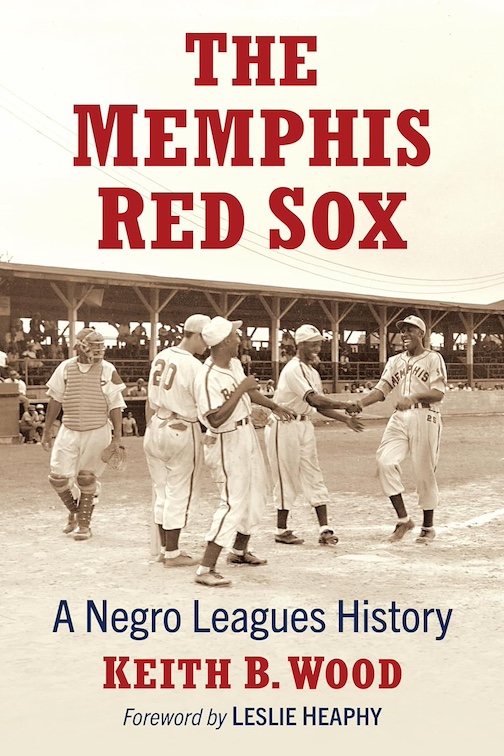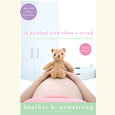Who Runs the World?
Debbie Dadey, Stephanie Faris, and Gail Nall hit the road for their Girls Read tour
Children’s authors Debbie Dadey, Stephanie Faris, and Gail Nall have teamed in the Girls Read book tour to discuss what life is like for middle-grade girls today. Though their books are very different from each other, their protagonists have one thing in common: they all work hard to achieve their goals, inspiring readers in the process. Dadey (Sevierville-based co-author of the Bailey School middle-grade series), Faris (Murfreesboro-based author of the Piper Morgan series), and Nall (author of six books for young readers) recently answered questions about the Girls Read tour via email:
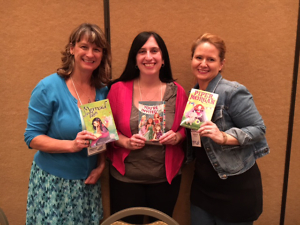
Chapter 16: Debbie, are there any noticeable ways in which literature written about or for girls has changed since you worked as a librarian?
Debbie Dadey: I remember one lovely young black girl who wanted a picture book about a girl who looked like her. A new one every week. That was easy . . . for a few weeks. There was a need for more. In fact, in 2012 only seven percent of books published were about people of color. According to NPR, in 2016 that number had risen to 22 percent, a definite improvement.
When I was a librarian and now as a writer, I know that every kid should see themselves in a book. And truthfully my stories aren’t about race. My books are about characters who face some sort of problem. And kids twenty years ago and today face the same type of problems: friends who are mean, bullies who are mean, parents who are mean, teachers who are mean, principals who are mean, monsters that are mean…. You get the picture.
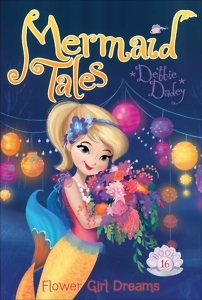 Matt del la Pena, whose Last Stop on Market Street won the Caldecott Honor, the Newbery Medal, and the Coretta Scott King Award last year, said, “I used to talk overtly about race and diversity in my novels. Over the years, I’ve decided that the new diversity I want to explore is writing about characters that are diverse, in stories that aren’t overtly about race.” New York librarian Betsy Bird calls this casual diversity—where diversity is just part of the everyday lives of the characters, not the sole focus of the story. And that’s what I strive for in the Mermaid Tales series, a casual diversity where friends of all backgrounds can be friends and work together to solve problems. Wouldn’t it be nice if the whole world was that way?
Matt del la Pena, whose Last Stop on Market Street won the Caldecott Honor, the Newbery Medal, and the Coretta Scott King Award last year, said, “I used to talk overtly about race and diversity in my novels. Over the years, I’ve decided that the new diversity I want to explore is writing about characters that are diverse, in stories that aren’t overtly about race.” New York librarian Betsy Bird calls this casual diversity—where diversity is just part of the everyday lives of the characters, not the sole focus of the story. And that’s what I strive for in the Mermaid Tales series, a casual diversity where friends of all backgrounds can be friends and work together to solve problems. Wouldn’t it be nice if the whole world was that way?
Chapter 16: In Mermaid Tales: Flower Girl Dreams, Pearl Swamp channels her passion for fashion into becoming a wedding planner. What advice might a mermaid give to human girls looking for ways to realize their dreams?
Dadey: Pearl is a take-charge kind of girl. In Flower Girl Dreams (Mermaid Tales #16) she wants to be a flower girl in Mr. Fangtooth’s wedding, so she devotes all her energy to that goal. As is often the case with Pearl because she secretly has a soft heart, she finds something else is more important and dives in (pun intended) to help a new friend’s dream come true. Pearl would say, “If you really want something, go for it!”
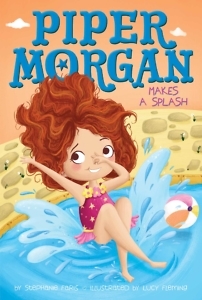 Chapter 16: Stephanie, in Piper Morgan Makes a Splash, you balance Piper’s youthful point of view with a healthy dose of consideration for authority. How do you find that sweet spot in writing for children?
Chapter 16: Stephanie, in Piper Morgan Makes a Splash, you balance Piper’s youthful point of view with a healthy dose of consideration for authority. How do you find that sweet spot in writing for children?
Stephanie Faris: Before writing the first Piper Morgan book, I read quite a few chapter books. You can probably see the Junie B. Jones and Clementine influences in her spunky personality. However, I do feel it’s important that we see Piper’s eagerness to please her mom, as well as her respect for the adults. I know parents struggle with that reluctance to stifle a child’s independent nature while also making sure they respect authority. Since they’re constantly moving around, Piper spends a great deal of time around adults, so she’s constantly seeking those peer relationships, but her time with her mom and grandmother makes her feel at home.
Chapter 16: Which came first: Piper’s fictional all-female family, or the idea for a Girls Read tour emphasizing strong female characters?
Faris: It’s interesting that you noticed that. I grew up with a single mom and sister, so I think a household full of females feels natural to me when I’m writing about children. Now that I think of it, most of my books feature characters with sisters and single moms. I’m working on a book now where the main character’s sibling is a hobbyist computer hacker, and I never even considered making that sibling a brother!
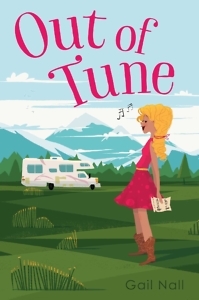 Chapter 16: In Out of Tune, Maya struggles with her parents’ plan to move from her childhood home into an R.V. Have you heard from any young readers facing a similar struggle to make sense of decisions over which they have little control?
Chapter 16: In Out of Tune, Maya struggles with her parents’ plan to move from her childhood home into an R.V. Have you heard from any young readers facing a similar struggle to make sense of decisions over which they have little control?
Gail Nall: I haven’t yet, but these are the kids I had in mind when I was writing Out of Tune. I remember those preteen years being especially hard—I wanted everyone to know how grown-up I was, but I had so little control over so much that happened in my life. As an adult, losing control of situations for whatever reason is terrifying enough. But as a kid, struggling with that balance of new independence versus still needing parents, it’s even more confusing. So, I hope Maya’s story can speak to kids out there who might be dealing with tough situations in their lives that are out of their control. Maya finds solace in her singing and in new friends, and I hope that inspires kids to search for and appreciate the constants in their own lives.
Chapter 16: Maya is a strong protagonist with clearly expressed opinions. Were there books in your own childhood that inspired any part of Out of Tune?
Nall: Absolutely! I read Laura Ingalls Wilder’s Little House books over and over and over when I was a kid. Laura’s independence, the family’s travels, and the love with which Wilder described the Great Plains have stuck with me for years. I tried to incorporate some of that awe of nature and reverence for the wild places in this country into Out of Tune.
I also like to think that Maya from Out of Tune has a little bit of Claudia of From the Mixed-Up Files of Mrs. Basil E. Frankweiler in her. Claudia makes up her mind that she and her brother are going to live in a museum and comes up with this clearly defined plan to make it happen. While it takes Maya a few tries to get her plan to go home into motion, she’s certainly made up her mind that it will happen, one way or another! I think Maya and Claudia could’ve been good friends.

Sarah Carter is a high-school English teacher living and working in Lebanon, Tennessee. She is currently an M.F.A. candidate at the Sewanee School of Letters.

